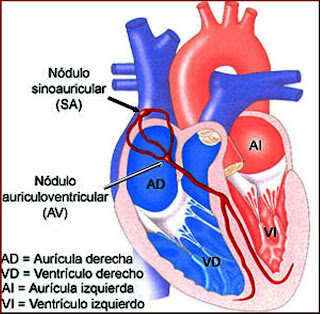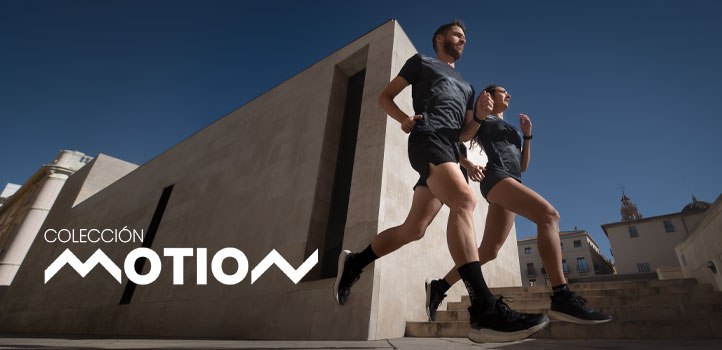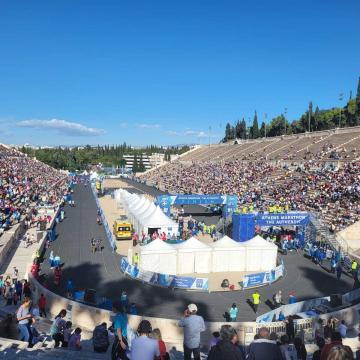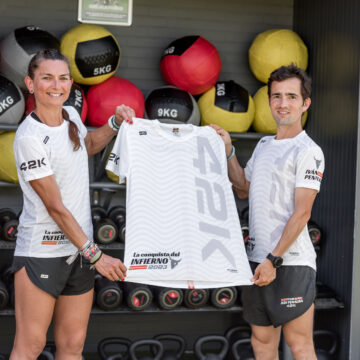Subscribe to our newsletter to find out about all the news and promotions, and automatically receive a welcome discount coupon in your email.
 The heart weighs between 200 to 425 grams and is slightly larger than a closed hand. At the end of a long life, a person's heart may have beat (that is, expanded and contracted) more than 3.500 billion times. Every day, the average heart beats 100.000 times, pumping approximately 7.571 liters of blood.
The heart weighs between 200 to 425 grams and is slightly larger than a closed hand. At the end of a long life, a person's heart may have beat (that is, expanded and contracted) more than 3.500 billion times. Every day, the average heart beats 100.000 times, pumping approximately 7.571 liters of blood.The heart is found between the lungs in the center of the chest, behind and slightly to the left of the breastbone. A two-layered membrane, called the "pericardium," wraps around the heart like a bag. The outer layer of the pericardium surrounds the source of the heart's main blood vessels and is attached to the spine, diaphragm, and other parts of the body by ligaments. The inner layer of the pericardium is attached to the heart muscle. A layer of fluid separates the two layers of the membrane, allowing the heart to move as it beats while remaining attached to the body.
The heart has four chambers. The upper chambers are called the "left atrium" and "right atrium" and the lower chambers are called the "left ventricle" and "right ventricle." A muscular wall called the "septum" separates the left and right atria and the left and right ventricles. The left ventricle is the largest and strongest chamber of the heart. The walls of the left ventricle are only half an inch (just over a centimeter) thick, but they are strong enough to push blood through the aortic valve to the rest of the body.
Any irregularity in the natural rhythm of the heart is called an "arrhythmia." Anyone can feel an irregular heartbeat at some point in their life, and these mild and infrequent palpitations are harmless. However, many people suffer from recurrent arrhythmias and require medical attention.
The driving system: Electrical impulses generated by the heart muscle (the myocardium) stimulate the heart to beat (contract). This electrical signal originates in the sinoatrial (SA) node located in the upper part of the right atrium.
The SA node It is also called the "natural pacemaker" of the heart. When this natural pacemaker generates an electrical impulse, it stimulates the atria to contract. The signal then passes through the atrioventricular (AV) node.
the AV node it stops the signal for a brief moment and sends it through the muscle fibers of the ventricles, stimulating their contraction. Although the SA node sends electrical impulses at a certain rate, the heart rate may vary depending on physical demands or stress level or due to hormonal factors.
The rhythm may be too fast (tachycardia) or too slow (bradycardia).
When a tachycardia the stimuli are so frequent that the atria do not have time to fill completely and send the blood to the ventricles, because in the middle of filling they receive another stimulus to contract and send the blood they have at that moment to the ventricles. It is as if the control tower of an airport sent the order to take off to the plane before all the passengers had entered it. In addition, since the number of planes that would have taken off would be very large, air traffic would collapse.
In the bradycardia the opposite occurs, that is, the number of beats decreases below the normal rate. Sometimes this frequency is so low that there can be a total cessation of impulses, which would lead to death. Continuing with the example of the control tower, in this case it would send very few takeoff orders, which would affect the arrival of passengers, fewer people would arrive at their destination because fewer planes would take off, and flights could even stop completely.
El having arrhythmia does not necessarily mean suffering from heart disease. This is what would happen with an airport, if it suffers slight delays, or infrequent changes, not much happens, just inconveniences derived from delays or sporadic changes. In the end, the passenger ends up accepting the delays.
The causes that originate the arrhythmias in many occasions are not known. Many heart diseases cause arrhythmias. On other occasions they are caused by stress, tobacco, caffeine, alcohol, some medications, etc.
Most people with arrhythmias shouldn't be afraid of it. You do not need to undergo many medical tests and do not require treatment for your arrhythmia.
In some cases, arrhythmias are associated with cardiovascular diseases, here the problem would be caused by the disease and not by the arrhythmia. Only on very rare occasions do arrhythmias have to be treated, this would be the case of severe bradycardias because they can cause cardiac arrest. Some people do not have any symptoms with the arrhythmia, other times they notice that their heart is beating very fast and with great force, they may also notice dizziness, shortness of breath, weakness and loss of consciousness. Middle-aged people are the ones who suffer the greatest number of arrhythmias.
TYPES OF ARRHYTHMIA
Sinus disease: the sinus node has a lesion by which it sends electrical stimuli more frequently (tachyarrhythmia) or less frequently than it should (bradyarrhythmia) or alternating in the same individual with less and more frequency (tachy/bradyarrhythmia) increasing the frequency during the inspiration and decrease during expiration.
Atrioventricular (AV) block: injury to the atrioventricular node can cause it to transmit the electrical impulse to the ventricles more slowly or by stopping it, thus the atria contract at a normal rate driven by the stimulation of the sinus node and the ventricles do so independently of a lower frequency. AV blocks can be first-degree blocks, with AV conduction prolongation; second degree blocks, with partial AV block, and third degree blocks, where AV block is complete.
Premature atrial contraction: an atrial beat occurs before the expected excitation. It can appear as a consequence of an increase in the size of the atrium or ischemia, or it can be secondary to stress, caffeine or nicotine.
Premature ventricular contraction: the process is the same as in the previous one only that it happens in the ventricle.
Wolf-Parkinson-White syndrome: It is caused by an incorrect connection between the atrium and the ventricle. The electrical stimulus from the sinus node reaches the ventricles too soon and returns to the atrium again, repeating the cycle in a circular way causing circular tachycardias.
Atrial tachycardia: the atrium contracts rapidly (beats can rise to 200) due to an ectopic focus, usually the ventricle responds to these contractions.
Paroxysmal atrial tachycardia: are periods of very fast heartbeats that begin suddenly and also end abruptly.
Paroxysmal supraventricular tachycardia: begins abruptly with an atrial or junctional premature beat and is supported by either an AV nodal reentry mechanism or an AV nodal reentry mechanism involving an accessory pathway.
Atrial fibrillation: rapid and disorderly contractions of the atria occur, leading to a ventricular response. The atrium can have a firing rate greater than 350 impulses per minute, but not all of them pass through the AV junction. The ventricles cannot contract in response to all the stimuli received, producing a disordered ventricular contraction rhythm.
Ventricular fibrillation: Cardiac arrhythmia characterized by rapid and disorganized depolarizations of the ventricular muscle. There is a complete absence of organized electrical impulses, conductions, and ventricular contractions. Blood pressure drops to zero and the person becomes unconscious. Defibrillation and ventilation measures should be initiated.
atrial flutter: it is usually an unstable arrhythmia, which spontaneously changes to sinus rhythm or atrial fibrillation, and it is rare that it lasts indefinitely. The prognosis for atrial flutter with no known cause is benign. The one caused by a previous illness, its prognosis will depend on it.
DIAGNOSIS
Sometimes the arrhythmia can be detected by the doctor in an examination, listening to them through a stethoscope. Although the most accurate method to diagnose it is through electrocardiogram. It may happen that when the electrocardiogram is being performed, no arrhythmia is detected because it is not occurring at that time.
the electrocardiogram It collects the electrical activity of the heart on a piece of paper that is then played by the doctor. There are therefore several ways to collect these signals: 1) Carrying out a ECG Resting. two) Stress Test: the activity of the heart is recorded while performing a specific type of exercise; This is how the heart responds to certain efforts. 3) Holter: the patient is monitored for 24 hours in a row, the cardiac activity is recorded in a portable recorder
TREATMENT OF ARRHYTHMIA
In many cases, no treatment is necessary because the arrhythmia subsides after a short time. If exciting drinks are being consumed in large quantities, they must be eliminated from the diet. Tobacco can cause them, so it will be abandoned.
The doctor will assess whether it is necessary to start medical treatment with antiarrhythmics, betablockers etc. If this is the case, a more controlled follow-up of the patient will be necessary. Sometimes it may be necessary to administer electrical shocks (cardioconversion) to make them go away. After this some medications will be used.
You can resort to the implantation of a pacemaker that controls the heart rate. Surgery is also another option when other treatments cannot control the arrhythmia. After locating the area of the heart tissue that causes the arrhythmia, it will be modified and thus the arrhythmia will no longer occur.
Cardiac arrhythmias in sport
There could be a certain relationship between atrial fibrillation and high-intensity sports practice, although it has not yet been identified as a risk factor.
atrial fibrillation is a cardiac arrhythmia in which there is disorganized activity in the atrium and a characteristic electrocardiogram pattern. It can be a chronic disease or present suddenly and can exist in individuals with or without heart disease. Its causes are related to emotional stress, post-surgery, acute alcohol intoxication, lung diseases, thyroid diseases, heart diseases, etc.
In a study carried out by the Cardiovascular Diseases group of the Hospital Clínic de Barcelona and published in the European Heart Journal, it is proposed that high-intensity exercise performed for many years could predispose to atrial fibrillation.
The study was based on the analysis of 1160 patients over a period of two years and found 6% of the group with atrial fibrillation and were under 65 years of age. In 32 of these patients, a history of high-intensity sports activity, practiced for years in youth and later, was found as a common characteristic. Interestingly, all the patients in this group were male and half of them currently lead a sedentary life. Next, the athlete patients (32) were compared with the group of sedentary patients with atrial fibrillation and under 65 years of age, observing that in the first group the arrhythmia crises began at an earlier age but they registered a lower incidence of arterial hypertension. Atrial fibrillation episodes occurred more frequently at night during rest. In sedentary patients, this clear relationship was not found.
Another test that was evaluated was the echocardiogram, which is based on the use of ultrasound in the diagnosis of heart disease. The echocardiographic parameters of the athletes, sedentary patients and twenty healthy controls were analyzed, obtaining as a result that both the athletes and the sedentary patients had a larger atrium as well as a larger ventricular mass, compared to the healthy controls. In turn, it was observed that the proportion of athletes among the patients who had atrial fibrillation was 63%, which is above the incidence of the general population.
atrial fibrillation it exists in young individuals, where in 30-40% of cases this arrhythmia has an unknown origin, so the existence of some factor that predisposes to suffer from it is assumed. It concludes that more studies are needed over ten or twenty years to assess to what extent intense and prolonged exercise can be considered a risk factor for the development of atrial fibrillation.
Regarding sudden death in sports, the group most at risk are men who, at 35 years of age or older, begin practicing sports one day, stimulated by all the messages heard and written that sport is health or With the hope of losing a few extra kilos, with the hope of being and feeling fit, they start from scratch and just throw themselves into it. If this individual has a risk by doing it this way, he has much more risk if he smokes, or is hypertensive and does not know it, has high cholesterol, etc. The correct thing to do is to assess whether the heart is "healthy" and can be "given its all", assess the situation of each part, that is, the current physical form, the body's response to effort (blood pressure, arrhythmias, etc.). ) and all this is achieved by carrying out a control prior to sports practice.
This control will consist of a good clinical history, a detailed review of the possible risk factors that concur in each individual, an exhaustive cardiological examination, a baseline electrocardiogram, a chest X-ray, an exercise test with aerobic functional capacity, and if one he wants to do it very well, an echocardiogram. With the result of all this, a type and modality of sport can be recommended for each situation and, in addition, any existing anomaly that prevents or does not recommend the practice of any or all sports can be ruled out. In addition, this will serve as a possibility to abandon bad habits or custom such as tobacco, sedentary lifestyle, excess weight, etc. Even the establishment of a higher quality diet.
With all this what we can conclude is that no heart is going to suffer a serious accident if it is healthy, that exercise by itself does not trigger this type of response if the cardiac structure is normal. Therefore, a significant alteration in cardiac structure and function is required for this response to be triggered, or in other words, an altered myocardium with an arrhythmogenic substrate is required for sudden death to occur. Although recent publications remind us that there are between 2-3% of people who die suddenly and the real cause of that death cannot be elucidated by any mechanism.
"Knowing the limits can mean the difference between life and death."
Other entries that they may interest you.
42K Best sellers in the last 15 days.
42K · All rights reserved














Comments
Post a first comment for this entry!